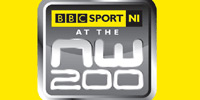Orthogonal frequency division multiplexing (OFDM) is considered the leading candidate for high data rate transmissions of 4-th generation mobile systems, especially in downlink. The main reason for this is the relatively simple receiver architecture also in highly frequency-selective multipath channels.

If coding is used in an adaptive system, coding and modulation should be optimized jointly, i.e. adaptive coded modulation should be used. Most of the existing adaptive coded modulation techniques for OFDM are either extensions of similar single-carrier methods [4] or employ bit interleaved coded modulation [5].

In an Orthogonal Frequency Division Multiplexing (OFDM) system using DQPSK, such as DAB, channel equalization is considered to be unnecessary. The reason for this is that there is no relative phase rotation due to the multipath channel in successive OFDM symbols.

A number of different antenna solutions can be applied to improve the radio performance – specifically coverage and capacity. The IEEE 802.16e-2005 standard and WiMAX Forum Certification Wave 2 strongly support advanced antenna systems.

The capacity can be later enhanced with soft capacity features, including advanced packet scheduling and dynamic multicarrier operation. Dynamic multicarrier refers to the deployment of a second 10 MHz carrier per sector while sharing a common power amplifier. The soft capacity features can be upgraded remotely with software.

In a Time Division Duplex (TDD) based system, the uplink and downlink use the same spectrum. Mobile WiMAX uses the TDD principle. Ideally, the received uplink signal could be used to achieve optimal downlink beamforming in TDD.

The capacity can be expanded with multiple frequencies. The second frequency can be introduced with wideband power amplifiers where the power can be shared between multiple frequencies. The capacity can be upgraded simply by remote software upgrade.

The capacity can be later enhanced with soft capacity features, including frequency selective scheduling and dynamic multicarrier operation. The capacity can be enhanced by using another 10 MHz carrier per sector. It is possible to utilize the existing power amplifier to share the power between two carriers in an optimized way (see Figure 9).

The preferred performance features for the WiMAX operators are illustrated in Figure 10. When designing the initial coverage, the 2x2 MIMO and MAP transmit diversity can be applied to boost the downlink coverage together with high power RF module. The uplink coverage can be enhanced with subchannelization gain and with low noise figure in the base station.

In summary, while adaptive downlink beamforming offers interesting tools to improve mobile WiMAX radio network performance, further work in technology and standardization is required before any benefit can materialize. Also the cost at which these potential future benefits can be enjoyed should be carefully analyzed in each case first.


